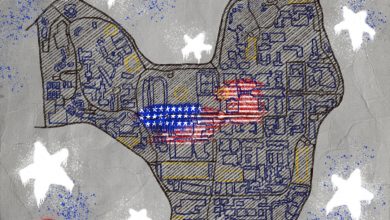Why So Skinny, Minnie?
 This upcoming holiday season, Barneys New York and The Walt Disney Co. are collaborating to put out a special holiday fashion campaign called “Electric Holiday.” The campaign will be unveiled to the public on November 14th at Barneys’ Madison Avenue New York location. The display will include an electric light show as well as a short film which will play in the window display. This film will turn children’s favorite Disney characters, such as Minnie Mouse and Daisy Duck, into high fashion runway models.
This upcoming holiday season, Barneys New York and The Walt Disney Co. are collaborating to put out a special holiday fashion campaign called “Electric Holiday.” The campaign will be unveiled to the public on November 14th at Barneys’ Madison Avenue New York location. The display will include an electric light show as well as a short film which will play in the window display. This film will turn children’s favorite Disney characters, such as Minnie Mouse and Daisy Duck, into high fashion runway models.
Throughout the design process, Barneys and Disney worked closely together to ensure that the “Electric Holiday” campaign was as true to the real world of high fashion as possible. Barneys’ creative director Dennis Freedman worked closely with animators, giving detailed descriptions of the clothing that would be showcased in the video- right down to the way the fabric moved or looked in certain lights. Freedman also brought models to the studio to walk the hallways and to serve as reference for the animators: “You can’t make the film without understanding every detail of how she walks, what her facial expression is, and how she stares ahead,” said Freedman.
This attention to detail and authenticity trickled all the way down to the size and body shape of the models – or in this case, the Disney characters. Freedom pointed out that the current size and shape of Disney characters was simply not fit for a world of fashion: “When we got to the moment when all Disney characters walk on the runway, there was a discussion. The standard Minnie Mouse will not look so good in a Lanvin dress. There was a real moment of silence, because these characters don’t change. I said, ‘If we’re going to make this work, we have to have a 5-foot-11 Minnie,’ and they agreed.”
According to Freedman, Disney characters are not suitable to sell high fashion as they are. Instead, they must be transformed to resemble real life, high fashion models – many of whom are severely underweight. What is disturbing about this dramatic change is that while the fashion being sold is aimed at adults, Disney is seen by children all over the world as a source of role models to be admired and imitated. Young children are extremely impressionable and the images presented by Disney are ones that indicate that the only way to be high fashion and glamorous is to be tall and unnaturally skinny.
Young women are constantly being bombarded with images of unrealistic women and body shapes through the media. These girls are being told that this unrealistic standard of beauty is something to strive for and that any other standard of beauty is unacceptable. Unfortunately, the only way to achieve that impossible beauty standard is, more often than not, to live an unhealthy lifestyle. The impact Disney will have is not just on young women. It is not bold to say that this will influence an even younger age group than ever before.
Disney, as a company that has such influence over young children, should take the responsibility to promote healthy and natural lifestyles and body images. Instead, they are presenting young women with distorted body images that will make them question their own body type by a dangerous standard of beauty.





Good work, Noelle!